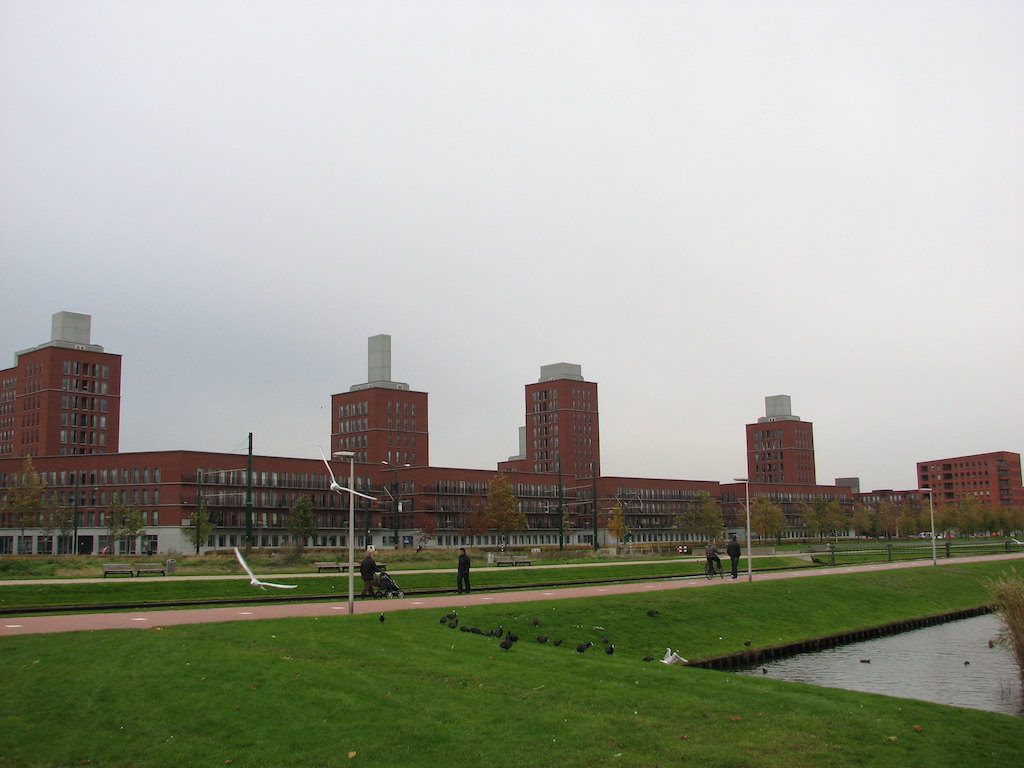Part of The Hague plans move from natural gas to geothermal district heating
The district of Ypenburg in the city of The Hague in the Netherlands has ambitious plans to free itself of natural gas for its district heating needs and plans the set up of a geothermal heating plant by 2025.
The Ypenburg district of The Hague in the Netherlands wants free its district heating from using gas from 2025 onwards. That is why a number of local energy pioneers have established the Renewable Heat Ypenburg (HWY) foundation. Together with the municipality of The Hague and energy supplier Eneco, they are making plans for geothermal energy, as shared in an article in Duurzaam Bedrijfsleven.
Frank Lentz, chairman of the HWY foundation, is proud of “his” Ypenburg, talking about sustainable plans and his dream: sustainable warmth for all 25,000 Ypenburgers. “We now get our central heating and hot tap water from city heat. Around 9,000 Ypenburg homes are connected to that heat network, plus 1,000 in a neighboring neighborhood in Nootdorp. 1,000 other homes are not yet on the heat network. We are investigating how we can heat all these homes in a sustainable way – without gas. ”
8,000 tons of CO2 savings
Lentz: “The city heat in Ypenburg is now entirely supplied by gas. For that we devote around 27 million cubic meters per year. Residual heat from power generation is already being used, but it needs to be even better: from 2025, HWY wants to feed the district heating network completely sustainable and CO2-free. At the same or preferably lower costs than now. In addition to all the gas, we also save 8,000 tonnes of CO2 per year. ”
Close cooperation
Since the establishment of the foundation – now four years ago – HWY has been investigating all kinds of ways to achieve that goal. The foundation cooperates with the municipality of The Hague and Eneco, owner and manager of the heat network system and heat sources. Lentz: “Such a transition to gasless heating is very complex. There is not one solution, you have to make smart combinations. Then it is especially important that we have a lot of good contact in that triangular meeting of residents, municipality and Eneco: this way you bring each other to ideas, you keep each other sharp and you move forward quickly. ”
Maurits van Laarhoven, strategic asset manager of Eneco, is the other host on our walk. Since the start of HWY, he has been involved in the transition plans on behalf of the energy company. He is also convinced that collaboration with residents is essential to tackle the transition properly. “The residents challenge us. They ask us to innovate and to make speed. They really immerse themselves in the matter and bring in ideas, which we investigate together and in transparency. This collaboration creates a common picture, with opportunities and solutions that Eneco would have flown differently and probably less successfully without their input. Geothermal energy has become more prominent and faster on the agenda. And with this cooperation we can make the heating networks even more sustainable by switching from fossil to sustainable sources. ”
Geothermal: heat from groundwater
The first and most important idea is geothermal energy: geothermal heat. Recently, Het Financieele Dagblad also reported that its use in the Netherlands is starting more slowly than planned. So far, only small-scale projects have been realized; there is not yet one city that heats a neighborhood with geothermal energy. But research has shown that it is possible in Ypenburg. Lentz: “With a grant from the province, we investigated which sustainable sources are suitable for Ypenburg. The conclusions are positive: Ypenburg can get heat from geothermal energy in the future. In the meantime, the Ministry of Economic Affairs and Climate has issued an exploration permit to further investigate the possibilities. Then we know for sure whether geothermal energy can become the most important source of heat for Ypenburg. Perhaps as one of the first residential areas in the Netherlands. ”
Lower temperatures
Van Laarhoven knows that you are not there with a geothermal source alone. A gasless heat network based on geothermal works with lower temperatures than the current, gas-fired heat network. To get the same comfortable heat in all houses, homes must be suitable for lower temperatures and you must also make the network more intelligent. Van Laarhoven: “We do this with additional measurements in the 32 heat substations, among other things. We have equipped twenty of these with pressure, flow and temperature sensors. It is a learning system. We have already been able to lower the entry temperature of the system by approximately 15 degrees. And soon we can predict peaks and troughs, so that we can optimally use the available heat. In addition, we are investigating together with HWY and the municipality how the installations in a home can work better, with the aim of lower temperatures on the heating network, less energy loss and more comfort for the customer. ”
A geothermal power plant is planned for 2025
The last stop on our round is at the combined heat and power plant on the outskirts of the neighborhood, at Prins Clausplein. Here, on vacant municipal land, the planned well with geothermal heating plant will arrive in 2025 if the plans go ahead. Much earlier – no later than the beginning of 2020 – Eneco has installed a 12 megawatt thermal capacity (MWth) electrode boiler in the existing plant. Van Laarhoven: “This ultra-efficient megaboiler takes the place of one of the current auxiliary heat gas boilers and will produce heat from clean electricity from mid-2020. The electrodeboiler works very quickly and is capable of converting surplus sustainable electricity into heat. ”The use of the electreboiler saves 700,000 cubic meters of gas per year. The electrode boiler can also store peak yields of sustainably generated electricity from the sun and wind in the form of hot water. In this way, Ypenburg will optimally use even the smallest bit of sustainable energy.
Blueprint for other municipalities
According to Lentz and Van Laarhoven, the collaboration in Ypenburg is unique in the Netherlands. “We are happy with the good contact here,” emphasizes Lentz. “It would be nice if this approach could be a blueprint for others. Not only for the technical solutions, but also because of the openness and transparency. When you actively participate as residents, you do not get a solution forced on you, but you can contribute to it yourself. ”
Source: Duurzaam Bedrijfsleven


















